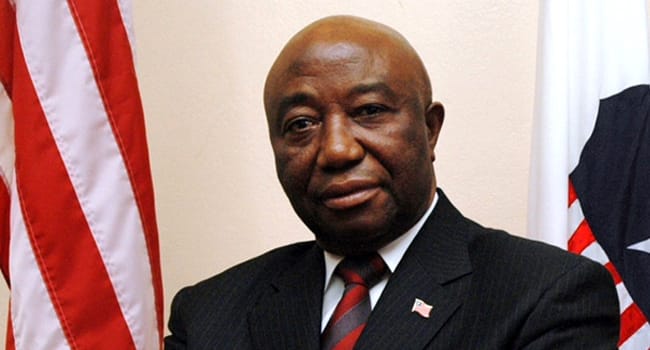In Summary
- Liberia tops the list with 26 presidents since it gained its independence in 1847. This high number can be attributed to the political history filled with military and democratic transitions.
- Uganda, Burundi, and Mauritania ties with a total of 9 Presidents each. This reflects the growth of their political transitions post-independence.
- Ghana stands out among all 10 countries for its progressive leadership from a coup-prone state to a stable democracy with 14 presidents.
Deep Dive!!
Having many presidents after independence doesn’t always mean instability. It can reflect years of struggle to have a strong diplomatic transition, but it can also symbolize functional democratic systems where there is equal distribution in leadership. In Africa, the number tells us the stories of military coups, short-lived governments, and peaceful democratic governance.
Notably, countries like Morocco, despite having 17 heads of state, do not appear on this list because it operates a monarchy system. The King performs the role of the head of state and the head of the military.
This article reveals the top 10 countries with the highest number of heads of state, revealing their leadership patterns and political journey.
10. Burundi

Burundi’s Political history has not always been stable. The country has witnessed assassinations, ethnic conflict, and coups, and this has happened after its presidential transitions. Burundi has had 9 Presidents in total. Micheal Miconbero led the first Republic, and Evariste Ndayishimiye is now the current president. Recent years have seen good improvement in governance but the legacy of rapid regime changes still reflects.
9. Mauritania
Mauritania has had 9 Presidents since it gained independence in 1960. Its political history includes several military coups, but the most significant are still in 1978, 2005, and 2008.
Many of its leaders came into power through military coups reinforcing their governance, this includes Maaouya Ould Sid’ahmed Taya and Mohamed Ould Abdel Aziz. The current president, Mohamed Ould Ghazoani, military background still reflects the strong Military trend, although he came into power through a democratic election.
8. Uganda
Since 1962, Uganda has had 9 Presidents, starting with Edward Muteesa II, a ceremonial leader, and Milton Obote, the first executive leader. Revolution and dictatorship have shaped Uganda’s political path. Idi Amin ruled in the 1970s through brute force, and some other leaders also came in through that way until Yoweri Museveni seized power in 1986. Surprisingly, in a country with so many presidential leaders, Museveni has been in power since then, making him one of the longest-serving leaders in Africa.
7. Somalia
Somalia’s central government collapsed in 1991 after the fall of Said Barre, and for close to 20 years, Somalia did not have a functioning government. Somalia’s political history has been sketchy, and since independence in 1960, it has had 10 heads of state. Somalia’s political state has only been symbolic rather than practical for a long period. In the late 2000s, it began to experience stability and progress. Hassan Sheikh Mohamud is the current president serving his second term.
6. Niger
Since its independence in 1960, Niger has had 11 presidents, with Abdourahmane Tchiani serving currently after the 2023 coup. Its post-independence has been ruled by the military and short civilian government. The frequent change in governance can be attributed to the interference of the military and elected government. Notably, Most of the presidents barely complete their terms, resulting in a lack of peaceful transition of governance.
5. Sudan
Sudan has produced 11 presidents since its independence in 1956. The country has been governed by military and civilians, with Omar al-Bashir ruling for 30 years until his ouster in 2019. During its military regime, it has been led by diplomatic leaders like Abdel Fattah al-Burhan. The presidency here is often diplomatic or military rather than a unifying national office.
4. Ghana
Ghana’s 14 presidents tell a story of both early instability and a smooth democratic evolution. Ghana went through multiple military regimes after the overthrow of Kwame Nkrumah in 1966, but then it returned to constitutional democracy in the early 1990s. Political power has been peacefully shared between top political parties ever since. Leaders like Jerry Rawlings rule both as a military leader and as a civilian president; all these are what contribute to its total count.
3. Libya
Since its independence in 1951, Libya has had a total of 16 heads of state, starting with King Idris I and Muammar Gaddafi, who ruled for 42 years, altering the structure of government. Gaddafi abolished the traditional presidency by replacing formal titles with revolutionary ones. After the end of his leadership in 2011, Libya has been ruled by competing factions and transitional councils. Although not every leader held the title of “ president,” they all functioned as heads of state.
2. Nigeria
Nigeria has had 16 presidents since it became a Republic in 1963. Starting with the ceremonial leadership of Nnamdi Azikiwe and then the military regime of Yakubu Gowon, Muritala Muhammed, and Sabi Abacha, Nigeria ran through the military and civilian leadership till 1999. Ever since it has been governed by a diplomatic leadership between major political parties. The current president, Bola Ahmed Tinubu, started his tenure having been elected through a democratic lection.
1. Liberia
Liberia has the highest number of presidents since independence in 1847. With a total number of 26 presidents, the country has experienced several military coups, multi-decade civilian rule, and brutal civil wars. As a nation freed from the African-American slaves in the 19th century, Liberia has adopted a presidential system similar to that of the United States. Leaders like Samuel Doe, Charles Taylor, and Ellen Johnson Sirleaf (Africa’s first female president) have shaped the different patterns of its political history. The current president Joseph Boakai, started his tenure in 2024 under the legacy of frequent leadership shifts.

